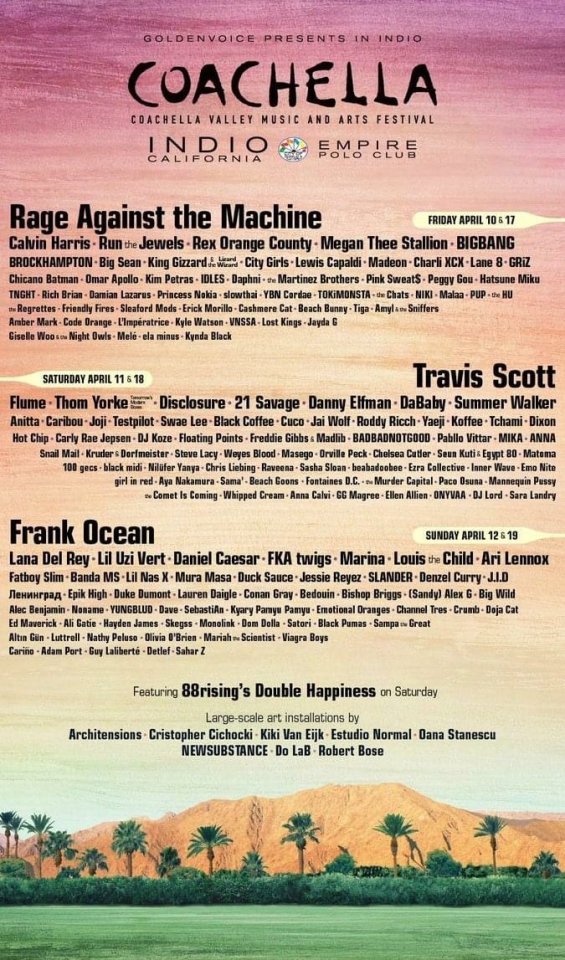Don't wanna be here? Send us removal request.
Text
This is beautiful and I love Horikoshi's art, but her face bothers me so much. Like the rest of the illustration is really well-rendered and three dimensional, while the face just looks way too wide and off from the angle of her head. Anyways, I changed the face slightly in MS Paint and I think it looks way better:


4K notes
·
View notes
Text

>First, we’ve discovered that about a quarter of all the internet connection in or out of the house were ad related. In a few hours, that’s about 10,000 out of 40,000 processed.
>We also discovered that every link on Twitter was blocked. This was solved by whitelisting the https://t.co domain.
>Once out browsing the Web, everything is loading pretty much instantly. It turns out most of that Page Loading malarkey we’ve been accustomed to is related to sites running auctions to sell Ad space to show you before the page loads. All gone now.
>We then found that the Samsung TV (which I really like) is very fond of yapping all about itself to Samsung HQ. All stopped now. No sign of any breakages in its function, so I’m happy enough with that.
>The primary source of distress came from the habitual Lemmings player in the house, who found they could no longer watch ads to build up their in-app gold. A workaround is being considered for this.
>The next ambition is to advance the Ad blocking so that it seamlessly removed YouTube Ads. This is the subject of ongoing research, and tinkering continues. All in all, a very successful experiment.
>Certainly this exceeds my equivalent childhood project of disassembling and assembling our rotary dial telephone. A project whose only utility was finding out how to make the phone ring when nobody was calling.

>Update: All4 on the telly appears not to have any ads any more. Goodbye Arnold Clarke!
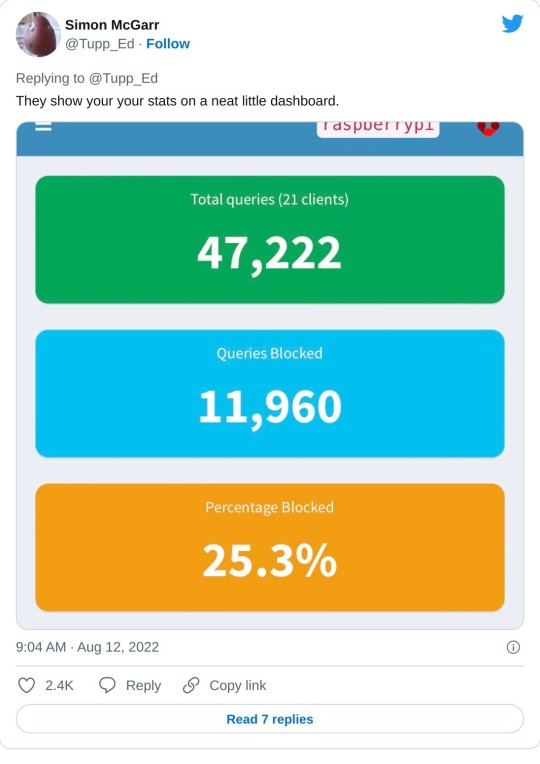
>Lemmings problem now solved.
>Can confirm, after small tests, that RTÉ Player ads are now gone and the player on the phone is now just delivering swift, ad free streams at first click.
>Some queries along the lines of “Are you not stealing the internet?” Firstly, this is my network, so I may set it up as I please (or, you know, my son can do it and I can give him a stupid thumbs up in response). But there is a wider question, based on the ads=internet model.
>I’m afraid I passed the You Wouldn’t Download A Car point back when I first installed ad-blocking plug-ins on a browser. But consider my chatty TV. Individual consumer choice is not the method of addressing pervasive commercial surveillance.
>Should I feel morally obliged not to mute the TV when the ads come on? No, this is a standing tension- a clash of interests. But I think my interest in my family not being under intrusive or covert surveillance at home is superior to the ad company’s wish to profile them.


>Aside: 24 hours of Pi Hole stats suggests that Samsung TVs are very chatty. 14,170 chats a day.
>YouTube blocking seems difficult, as the ads usually come from the same domain as the videos. Haven’t tried it, but all of the content can also be delivered from a no-cookies version of the YouTube domain, which doesn’t have the ads. I have asked my son to poke at that idea.
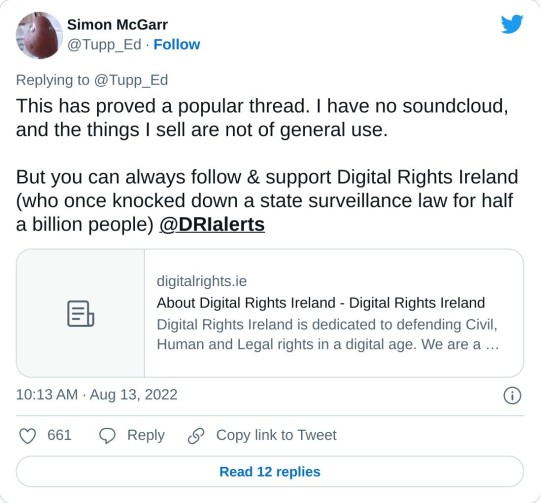
194K notes
·
View notes
Text
That does actually make the most sense. If you look at Avatar as a rational adult in their universe, the entire plot really is really farcical and worthy of being mocked. Your king is a tyrant who burns and banishes the royal family’s only crown prince, tries to murder the moon, and thinks sending his 14-year-old daughter (your nation’s princess) into enemy territory is a good idea. Obviously, you think he’s a goddamn super villain. Meanwhile, the only resistance with any weight behind it is led by a 12-year-old who shirked his responsibility for a hundred years. I just imagine your average adult in the Fire Nation has the demeanor of Bob Belcher:
“You’re terrible. You’re all terrible.”
Does anyone know if the Ember Island Avatar play was supposed to be subversive?
Because they put on a story about a sympathetic character with deep emotions who is desperate to find hope, her brother the funny character, and a light-hearted prankster whose stated goal was to bring laughter and harmony to all, and then had them killed at the end by a representation of their leader who was absolutely posed and acted as if he were a villain. And because Ozai wins, nobody can point to the play and say “That’s subversion!”
The people who love Ozai and think he can do no wrong will see a story where Ozai wins. The people who actually understand how drama works will realize that this is a tragedy where the villain wins.
(They did turn Zuko into a buffoon, and they played Azula pretty straight, so it’s not as if they wholly despise their royalty or think Zuko’s a great guy for changing sides… but Ozai is absolutely presented in that story as if he’s a villain, except that in the Fire Nation of course “Ozai wins” is required.)
Like… I’ve read propaganda. In stories which serve as propaganda, they don’t make the entire story be about the “villains” except for approximately two minutes at the end when the “hero” appears, they don’t make the “villains” at all sympathetic, and they spend a lot more time making the “hero” seem heroic and wonderful. Ozai comes across as powerful and dominating, but not at all heroic. The avatar and companions come across as fun, entertaining people that you can laugh at but still sympathize with. The whole thing’s kind of a fun comedy until you get to the end and Azula murders Zuko and Ozai murders the avatar. That’s… not propaganda in favor of Ozai. But because Ozai is shown as powerful and dominating and he wins, the Ember Island Players totally have plausible deniability.
I don’t know whether this was the intent of the creators, or whether they thought the Ember Island Players were straight-up doing a story about the defeat of the Avatar and the triumph of the Fire Nation from the beginning… does anyone know if they’ve ever said anything about it? But to me, it implies there were a lot of Fire Nation peeps who did not approve of the war, or Ozai, but had to keep their mouths shut.
719 notes
·
View notes
Text
Maybe Aang and friends are meant to be seen as like Seth McFarlane characters? They’re bumbling idiots who think they’re good people but are actually horribly selfish to the point of sociopathy.
For example, play Katara is portrayed as having convinced Jet to drown a whole village by crying a bunch and Koizilla Aang in the play is portrayed as smiling cheerfully as she destroys Fire Nation ships.
So when Ozai defeats them at the end, maybe the Fire Nation is cheering because the idiot characters finally get their just desserts? Like if Family Guy were to end with all of Quahog blowing up. Sure, some people would be bummed that the dumb adventure are over, but we’d all be thinking “Yeah, but they all pretty much deserved it...”
Does anyone know if the Ember Island Avatar play was supposed to be subversive?
Because they put on a story about a sympathetic character with deep emotions who is desperate to find hope, her brother the funny character, and a light-hearted prankster whose stated goal was to bring laughter and harmony to all, and then had them killed at the end by a representation of their leader who was absolutely posed and acted as if he were a villain. And because Ozai wins, nobody can point to the play and say “That’s subversion!”
The people who love Ozai and think he can do no wrong will see a story where Ozai wins. The people who actually understand how drama works will realize that this is a tragedy where the villain wins.
(They did turn Zuko into a buffoon, and they played Azula pretty straight, so it’s not as if they wholly despise their royalty or think Zuko’s a great guy for changing sides… but Ozai is absolutely presented in that story as if he’s a villain, except that in the Fire Nation of course “Ozai wins” is required.)
Like… I’ve read propaganda. In stories which serve as propaganda, they don’t make the entire story be about the “villains” except for approximately two minutes at the end when the “hero” appears, they don’t make the “villains” at all sympathetic, and they spend a lot more time making the “hero” seem heroic and wonderful. Ozai comes across as powerful and dominating, but not at all heroic. The avatar and companions come across as fun, entertaining people that you can laugh at but still sympathize with. The whole thing’s kind of a fun comedy until you get to the end and Azula murders Zuko and Ozai murders the avatar. That’s… not propaganda in favor of Ozai. But because Ozai is shown as powerful and dominating and he wins, the Ember Island Players totally have plausible deniability.
I don’t know whether this was the intent of the creators, or whether they thought the Ember Island Players were straight-up doing a story about the defeat of the Avatar and the triumph of the Fire Nation from the beginning… does anyone know if they’ve ever said anything about it? But to me, it implies there were a lot of Fire Nation peeps who did not approve of the war, or Ozai, but had to keep their mouths shut.
719 notes
·
View notes
Photo
Considering that Avatar also merged Western and Eastern ideas of dragons together, it makes sense that they’d do the same for phoenixes. And this isn’t the first time that the show flubbed the whole Yin-Yang thing. At the end of Book 1, they made the white koi the Moon Spirit when it really should have been the black koi. Plus, as far as Ozai knows, the dragons were a species that the Fire Nation purposefully wiped out, so it wouldn’t make sense to call himself the “Dragon King”.
Or... Alternatively, for all of Ozai’s awfulness, dude could just be a really big feminist. ;)





Phoenix Queen King Ozai
Ozai declaring himself ‘Phoenix King’ is supposed to show how far around the bent Ozai has gone. And my it is far.
But if you view it in-universe (the show is set in a sino-centric universe) it becomes even weirder.
Let me explain:
The phoenix is the embodiment of female power i.e. the Empress; not male i.e. the Emperor. That would be the dragon.
The phoenix represents yin, the dragon yang.
So Phoenix King is kinda an oxymoron.
What he did is either declaring that he now is Emperor and Empress in one person. Ozai is taking on the yin part of the yin and yang, on top of the yang of 'king’. He is now, by declaring himself phoenix and dragon, 'complete’. Or, and I am not going down that creepy road, one could argue that by making Azula Fire Lord, he is making her the dragon/husband.
Anyway …
Now I understand that they wanted to run with the 'reborn from ashes’ aspect, but it makes Ozai, in cultural and show context, sound even more insane than he is.
On a side note: There is a real phoenix crown, traditionally worn by the Empress (compare picture), and there are even similarities between Ozai’s helmet/crown and the real thing e.g. the wings on the sides.
Image source: One, two
The phoenix, in Chinese mythology and tradition, has symbolized the Empress and the yin force since the Yuan Dynasty.
In ancient and modern Chinese culture, they can often be found in the decorations for weddings or royalty, along with dragons. This is because the Chinese considered the dragon and phoenix symbolic of blissful relations between husband and wife, another common yin and yang (Yin is female and yang is male.) metaphor.
If you want to know the myth behind the dragon and the phoenix go here:
How Phoenixes and Dragon came to be paired together.
992 notes
·
View notes
Text
Toph’s Dad
So I was skimming through the Lao Beifong (Toph’s dad) tag on Tumblr and he seems pretty universally hated by the fandom. I haven’t read the comics but, based off his actions in the show, I think he’s more than just some asshole. Obviously, we as the audience know that Toph’s destiny is to help the Avatar, but really think about events from his point of view:
1. He’s one of the wealthiest people in the Earth Kingdom so he has to constantly worry about him and his family being extorted and/or kidnapped. Which literally happens in the Blind Bandit episode.
2. The Avatar visits him one day and tells him he wants his daughter to help him win a war. In other words, Lao Beifong was asked to allow his daughter to become a child soldier.
3. His worst fears come true and his daughter does end up kidnapped. Had he not paid her ransom, she would have still been locked in that steel cage. And, to his knowledge, metalbending does not exist.
4. Toph demonstrates that she’s an extremely skilled Earthbender. While that’s all well and good, if knowledge of her abilities gets out, there’s a good chance the Earth Kingdom’s military will come knocking and force her to join the war effort.
5. And now, from his point of view, the Avatar has convinced his child to run away from home and put her life in peril every single day.
Mind you, he was definitely not a good father to Toph. It’s likely that Toph had probably tried to explain seismic sense and her abilities to her parents in the past, and her father probably just wrote if off as “she’s just making things up so we’ll give her more freedom.” His over-protectiveness was to the point that Toph had no friends and very few people even knew of her existence, so that certainly did not help Toph’s social or emotional development.
But do I think he’s a callous and narcissistic monster? Not at all. I think he was someone who let fear run his life and that ultimately poisoned his relationship with his daughter. I think it’s interesting to note that, according to Guru Pathik, the Earth Chakra deals with survival and is blocked by fear. Toph’s father tried to teach his daughter to fear the world and nothing good came from it. He stifled her emotional/social development and left her resenting him. Meanwhile, Toph’s desire to survive in the world, rather than fear it, led her to become the world’s greatest earthbender and to actually grow as a person through her interactions with others.
I guess what I am trying to say is: I think we can just add Lao to the list of Avatar characters that need to go on a life changing adventure with Zuko. ;)
42 notes
·
View notes
Photo

Female Shinsuke Nakamura looks like Gina Darling.
18 notes
·
View notes
Photo
I completely agree with this theory! I would also like the expand on it:
Kyoshi peninsula was originally settled by Water Tribe people. With the exception of the Kyoshi Warriors, everyone on the island wears blue robes similar to what we see Sokka and Katara wear in warmer climates. And it seems like the majority of people on the island have blue eyes, not just Suki. Plus, it's super close to the Foggy Swamp so maybe that whole area used to have a significant Water Tribe population?
My theory is that the Southern Water Tribe was founded by people who were cultural dissenters of the North. Most of these dissenters immigrated to the South Pole, but some chose to settle down along the southern coast of the Earth Kingdom and intermarry with the locals...or just live in a swamp, I guess.

Headcanon: Suki has blue eyes because she is part Water Tribe.
Geographically speaking, Kyoshi Island is located very close to the South Pole, and it’s plausible that Kyoshi Island and Southern Water Tribe had a lot of interaction before the war.
One of Suki’s ancestors could have come from Southern Water Tribe and that could explain why Suki has blue eyes, trait unique to people of the Water Tribe, despite being born in the Earth Kingdom.
634 notes
·
View notes
Text
I never thought about it, but it makes so much sense! Had Zuko’s burn been a normal attack, the burn really should have covered more of his body. Plus, the Agni Kai with Zhao shows that Zuko’s really good at bending away fire. But if the attack was a physical slap that just happened to include some fire, I don’t young Zuko would have had the courage to physically deflect away his father’s hand. THIS SHOW HAS SUCH GOOD ATTENTION TO DETAIL.
Okay, so I just got shampoo in my eye (luckily my blind eye; it could have been a lot worse) and as I was grabbing said part of my face in complete agony, it hit me…that’s exactly how Zuko got his scar. Not the ‘shampoo’ bit, the ‘grabbing the face’ bit. Ozai put his hand to Zuko’s face is what I’m getting at.
I guess part of me always knew that, because his scar does look a lot like a handprint:
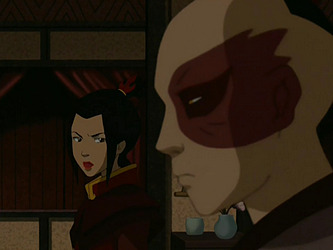
But still, whenever I thought about the agni kai, I’d imagine Ozai standing over his thirteen-year-old son and firing haphazardly like:
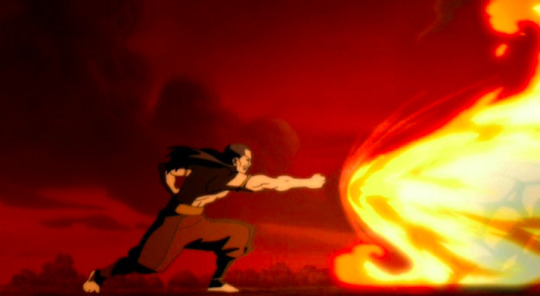
But no, I think he brings his hand right up to Zuko’s face.
Which would explain, you know, this:
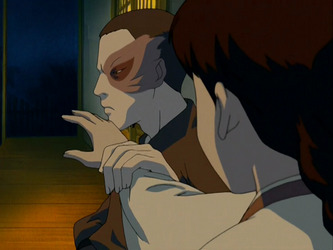
At first, I thought that he backhanded Zuko, like Azula does here.
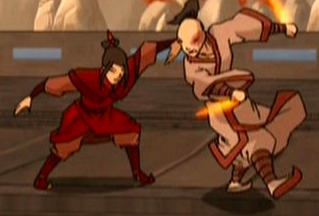
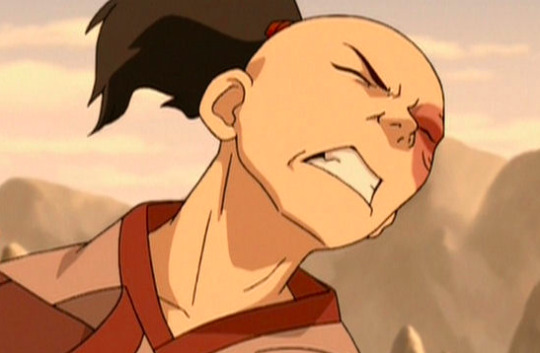
But when I looked up these photos, it hit me (no pun intended) that we’ve probably seen the exact move that Ozai made:
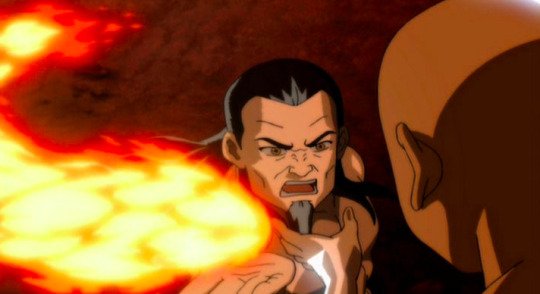
Just at a different angle, because I imagine that he was standing over Zuko, due to the whole symbolism of height differences.
Still, I think he slowly brought his fire-encased hand up to Zuko’s face and held it there, burning him, just like he was about to do with Aang. The difference being that Aang is able to deflect the attack:
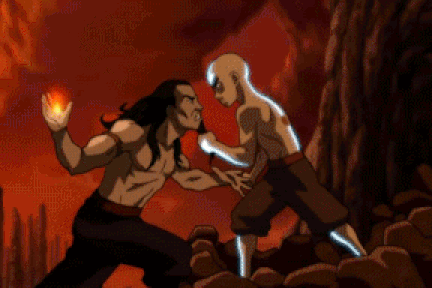
Which he was able to do, because he learned from Zuko.
I swear this show has more circles than a cheese grater…
58K notes
·
View notes
Note
My theory is that Ozai realized keeping a nation that comprised half of the world's population (at minimum) under his control simply wasn't possible. The Fire Nation would never have the manpower to truly rule the Earth Kingdom. When Omashu got conquered, there were Fire Nation soldiers on every corner to keep the locals "in-line". Now imagine having to set up that kind of police state in every decently sized city, in a country that's five times the size of your own. It's just logistically impossible.
The only option, in Ozai’s mind, was to wipe out that population. I know it's a cliche at this point, but Ozai's plan really wasn't all that different from Hitler's. Hitler wanted to depopulate Eastern Europe of the Slavic people so Germanic people could move into that land. Of course, it would still be extremely expensive to invest in completely rebuilding the infrastructure of a ruined nation. But with Earth Kingdom citizens out of the way, they at least wouldn’t have to set up martial law everywhere to keep order.
Similarly, the failed invasion of the Northern Water Tribe has some parallels to Nazi Germany's failed invasion of Russia. In the end, what stops the invasion is an uncontrollable force of nature unique to the region: "General Winter" for Russia and the Ocean Spirit for the Northern Water Tribe.
Why would Ozai, canonically or not, be against colonialism or taking more land for the Fire Nation? He was pretty supportive of Azula taking Ba Sing Se... right?
I think my explanation has been a bit dodgy: Ozai was against Azulon’s colonialism, but he was okay with a different sort of colonialism.
Ozai rejected Azulon’s (and Sozin’s) goal of a Fire Nation that encompassed the Earth Kingdom not just as colonies, but as a single unified nation. Ozai was more interested in exploiting the Earth Kingdom for resources and labour. I understand why these two aims might appear practically the same, but I haven’t yet delved into the after effects of the war.
What complicates things is that so much of the Earth Kingdom was destroyed. Basic infrastructure and much of the agricultural base of the Earth Kingdom was incinerated in the flames of war. In order for Azulon’s goal to be realised, the Fire Nation was pouring resources into the Earth Kingdom to bring it up to the standard of the Fire Nation. Ozai “dismantling the colonies” was more specifically withdrawing assets from regions that weren’t yet “functional”, and re-installing military control over functional regions (which had civilian governments of both Fire and Earth natives).
In other words, Ozai was quite happy to set up labour camps where they were easy to set up and leave the rest of the Earth Kingdom to descend into a trash heap. While Azulon has the foresight (or perhaps even compassion) to develop the Earth Kingdom, Ozai was only ever thinking about short term Fire Nation interests.
So what of Ozai’s views on Omashu/Ba Sing Se and his “attack” during the return of the comet? Was this land seizure for the Fire Nation? I think it was more of a show of power. I’m toying with the idea that towards the end of the war Ozai was becoming unpopular (to important people in the Fire Nation), so maybe that might have something to do with it. In terms of his comet attack, that’s just an egomaniac who’s had far too much to drink.
23 notes
·
View notes
Text
I’m currently working on a world where all the characters are their opposite nation, while keeping each nation’s general culture in tact.
Your description of how blind airbending would work is perfect for my concept of Airbender Toph. Essentially, the Water Tribe empire has wiped out the Earth Kingdom, and the Air Nomads respond by practicing extreme isolationism from the rest of the world. Toph feels extremely stifled and secretly sneaks out to participate in bending tournaments held across the Fire Nation. She runs into Fire Nation Katara and Sokka with the last earthbender, Avatar Aang. And the plot basically follows what happened in Toph’s intro episode. The primary difference would be that Toph wishes to escape a repressive and detached culture, instead of overprotective parents.
Toph, blindbending and formidable airbenders
Toph’s ability to see using earthbending is possible in my world – it just doesn’t function as it’s depicted in the show. In the show we see an outwards radiation from her foot, which I think does a good job at telling us that sight is somehow happening. It’s reminiscent of echolocation or sonar, but I don’t this is how it works. The show also suggests that her foot is the thing doing the sensing, and this isn’t how it works in my world either.
The key thing to understand is that “blindbending” is bending something without influencing it. The common understanding of bending associates it with moving stuff, but my understanding of bending is that it’s only about engaging with something. For most benders this engagement does result in movement, but some skilled benders can “feel” the substance without making it move. There are two ways that this can be done. The first is to have a sort of intrinsic connection to the thing you’re bending, to feel it as it’s stationary; this is the more sensitive method. The second is to apply extremely delicate amounts of force on the thing you’re bending, to feel the resistance and discover its properties; this is less sensitive. Regardless of which method an individual uses, most benders who are capable of this are limited to sensing shape. For highly trained individuals they can sense pressure. For a prodigy like Toph, she can sense vibrations and pressure at a minute scale.
Toph is feeling vibrations in the earth – but not with her foot. Her foot is just her physical connection to the earth which allows her bending/spiritual connection to be strong enough to sense minute vibrations. She can sense that someone is walking because of the vibrations in nearby earth. She can tell that someone is standing at a particular location by feeling the pressure that they exert on the ground beneath their feet.
Airbenders can do something similar. In the show it’s said that airbenders shaved their heads to increase their sensitivity to air and I think this isn’t exactly true. Blindbenders don’t have enhanced physical sensation. It might be true that they’re more mindful of the sensations that they do have access to, but their physical bodies aren’t enhanced by their bending. Their sight stems from their bending abilities. An air blindbender sees by feeling displacement of air. Waterbenders can do something similar to airbenders by creating a mist, but the detail of their mental map doesn’t have the same resolution of the airbenders.
There are two other interesting points I’d like to mention. The first is that blindbenders could also be deaf. If they’re capable of sensing minute vibrations, then they can have superhuman hearing. Airbenders and waterbenders can feel the vibrations in the air, while earthbenders can use the ground as a sort of listening device. Moving things create vibrations that could enter into the blindbender’s sphere of influence (the region that their bending extends to). The real question is how far these things can occur for them to still leave a decipherable mark. As distance increases, there’s more and more irrelevant noise that the blindbender would detect. Apparently, consumer long-distance sound recording devices can hear conversations from at least 200 metres away. It seems fair to give prodigy airbenders to hear conversations at least 300 metres distant, considering their listening device is a half-sphere with a radius of about 30 metres rather a microphone with a small dish.
The second is that echolocation and sonar might have their uses. The principles of sonar and echolocation are relatively simple. You create a controlled vibration and then listen for echoes. Plug what you hear into some crazy maths and you can map things. The most practical application I can think of in my world is waterbenders using this to locate schools of fish.
From a combat perspective, all of this makes air blindbending a terrifying prospect. Both waterbenders and earthbenders are handicapped – waterbenders must use mist and earthbenders are limited to relying on the ground. Blindbending airbenders can have complete spatial awareness at all times. Toph can have an awareness of where people are, but she can’t always see what those people are doing (eg. drawing a bow). The airbender can see the shape of everything in their sphere of influence, as well as hear and locate the actions of everyone and everything outside of it.
18 notes
·
View notes
Text
Someone needs to start a “Air Nomads are Poorly Conceived Club” so we can hammer out a version of Air Nomad culture that’s as rich and multi-dimensional as the other nations. I remember reading in the AtLA artbook that much of Bryke’s ideas about the Air Nomads were inspired by Shaolin Kung Fu flicks so they’ve pretty much admitted their portrayal is really shallow.
I guess I’ll list my issues with how the culture is structured and provide my own headcanon answers.
Issue 1: To begin with, Nomadic Monks aren’t a thing, as far as I know. The concept is pretty contradictory, monks tend to stick pretty close to their temple/monastery and nomads are defined by not sticking around anywhere.
Answer 1: I agree with your idea of distinguishing the Air Monks from the Air Nomads. My theory is that the Air Monks/Nuns are the cultural and political elite of their society. They believe that any sort of family structure is an earthly attachment that impedes enlightenment, so they encourage Air Nomads (their society’s commoners) to give up their airbending children to the monks to be raised communally.
The children are trained by the Air Monks/Nuns to master airbending and understand their culture’s theology. The exceptionally talented or thoughtful children are recruited to be monks themselves, while the unexceptional ones are expected to leave the temples and become Air Nomads by adulthood. I’d like to think, in preparation for nomadic life, air children are granted more freedom to travel and explore on their own as they master more tiers of airbending. Since Aang became a master by age 12, he’s probably had close to adult levels of freedom since he was probably like 10-ish. That’s how he managed to have so many friends all over the world at such a young age.
This also explains why the monks focused so much on teaching the children airbending, rather than providing a Guru Pathik-style spiritual education. If most children are destined to be nomads, their first priority would be teach them survival skills (airbending) rather than theology. Had Aang been allowed to experience a normal Avatar’s journey, he would have had a whole 4 years to better understand the finer points of the Air nation’s belief system before his world adventure.
I’m going to say adulthood for them starts at age 16, because that seems to be the number that Avatar defaults to for any coming-of-age event; the Avatar journey and Northern Water Tribe marriage both happen at that age. Sokka (15), Yue (16), and Zuko (16) really struggle with understanding what it means to become an adult, while all the 14 and under characters don’t seem to give the notion too much thought just yet.
I imagine, before being revealed to be the Avatar, Aang assumed he was on a fast track to high-status monkhood. Hence why Aang identifies as a monk a few times in the series. Of course, a twelve-year-old really has no idea what actually being a monk really entails; in Aang’s child mind, it might just mean “really powerful Airbender with authority.” Then he sees Katara and all thoughts of lifelong celibacy fly out the window.
Issue 2: I straight up just hate the “Air Nomads can all bend because their lifestyle makes them crazy spiritual” excuse. Cause non-benders don’t have it hard enough without the implication that they choose to be spiritually deficient and it’s their fault they don’t have superpowers. Besides that whole mess of unfortunate undertones, why does airbending even have this requirement? It’s not there for any of the other elements; we see plenty of non-spiritual people bend Earth and Fire. If the four elements are supposed to balance each other, then their barriers to entry should be comparable.
Answer 2: The “we’re just that spiritual” explanation is nothing more than Air Monk propaganda told to the children they train. Air Nomads who give birth to non-benders cannot send their children to the Air Temples to be raised because their culture assumes a lack of bending is a reflection of moral/spiritual “failing”. If we assume that everything we know about the Airbenders comes from Aang exclusively, then the show’s rose-tinted portrayal of the Air people makes sense. Aang only grew up around other airbenders, so how was he to know that Air Nation non-benders existed? It would also explain why Aang has such a hard time accepting any sort of industrialization that would improve life for non-benders. He really wasn’t raised to consider the perspective of ordinary people.
As for what happens to non-benders, I think there’s two options. The first, and more common option, is that they’re given up for adoption in another nation. The family structure is not “organic” to Air Nomad culture. Children are expected to be raised by communally by a collective of wise monks/nuns, so your average Air Nomad mother can’t fathom raising a baby all on her own. And “fatherhood” as a social or economic role is simply not a concept in their culture.
However, there’s always going to be Air Nomads that rebel against their culture and form families. These Air Nomads keep their children, both bender and non-bender, and are ostracized by the Air Nation. From the perspective of the Air Nation, they’re being arrogant, selfish, and irresponsible; instead of heeding the advice of their “wiser” elders and giving the children to people more experienced in raising them (Monks/Nuns for airbenders and orphanages for nonbenders), they “feel” they know better and choose to “hoard” their children to appease their own egos. Or course these rebel Air Nomads would argue that giving up a child that you created to be raised by someone else is even more callous, selfish, and irresponsible. It’s up to the audience to determine who they should agree with.
Issue 3: If they’re nomads, what are they following? Mike and Bryan seem to think that a nomad is just a perpetual tourist who goes where ever they want and when ever they want. In reality, nomadic life is all about following your vital resources. If you’re a hunter nomad, you follow migration patterns; if you’re a herding nomad, you have a set grazing territory you travel within; if you’re a trading nomad, you travel to different population centers to sell your wares. So what did the Air Nomads do?
Answer 3: Since they’re all brought up vegetarian, I doubt most Air Nomads would be comfortable being hunters. Especially since butchers are pretty much universally regarded as the lowest caste of people in Asia. Since Air Nomads are constantly in flight, there’s really no animals they could herd. Sky Bison are pair bonding animals that don’t appear to travel in packs.
This leads me to believe that the Air Nomads were a variety of traders and service-types. One service I could see being very common would be transportation. They would utilize their sky bison to help take travelers to where ever they needed to be for a small price. This might explain why everyone in Avatar seems to write and speak in the same language. Their cultures developed in a world where essentially plane-taxis were always readily available to everyone. And if world travel was that accessible to the masses, there might have been a greater push to create a universal language and writing system.
This would make Sozin’s genocide of the Air Nation even more atrocious on a global scale. He essentially made the Fire Nation ships the only means of safe transportation for the other nations. He created a false monopoly.
Other nomadic-ish occupations I could see airbenders taking up:
* Spirit soothers. Essentially capitalizing off the Air Nomad spiritual image to perform exorcisms for homes and villages.
* Merchants. Using their bending and bisons to acquire rare goods for sale in different countries.
* Odd jobs workers. I’m sure access to flight would make them handy for many situations.
The purpose of the Air Temples would be to serve as a sanctuary, hospital, and embassy to the Air Nomads. While they couldn’t stay there too long, all Air Nomads were welcome to seek refuge in the temples if they were exhausted or sick. Of course, they were also expected to make generous “donations”, as well. Air temples were also expected to look after all ill, injured, or pregnant Air Nomads until they were back to peak health. Finally, any crimes committed by an Air Nomad in another nation were to be dealt with by the Air Temples. Punishments for lesser crimes were provided by the Air Temples, usually some form of community service around the temple. More severe were handed over to the prisons of the nation they committed the crimes in.
This essentially allows the Air Temples to keep up a facade of “we’re all just really talented and nice people” to the airbender children like Aang. Their non-benders and criminals were dealt with by other nations.
Reinventing the Air Nomads
The Air Nomads in the show don’t satisfy my world at all. I’m reinventing the Air Nomads.
In my opinion, the Air Nomads in the show are constructed to be a punching bag for the Fire Nation. The other nations all have their own issues, but the Nomads are painted as some sort of wonderland to be ravaged by the Fire Nation. I want to give the Air Nomads are bit more character.
Basically, the Air Nomads we see in Aang’s flashbacks are just a small sub-section of the air nomad society. I make the distinction between “air nomads”, which is used to describe all peoples of what we might otherwise call the Air Nation, and the “air monks”, which is what we see in the show.
The air monks
The reason that all monks are airbenders is that all air nomad newborns are tested for their ability to airbend (via ancient talismans or whatever you want). If they are airbenders, they are taken by the Temple and raised as monks. This makes the Air Nomads quite odd in that we have a complete separation between benders and non-benders.
Now that I think about it, the show never really explains why the air monks are monks. The monastic life is associated with asceticism as a method for study and devotion. But what are the air monks doing this for? What is it that the monks study and are devoted to?
Tibetan monks and Guru Laghima’s “let go your earthly tether” are obviously Buddhist – but what does this mean in the context of the world of Avatar? One understanding might be that the end goal of enlightenment is to become a spirit, or something of that nature.
Whatever theology the air monks once followed, by the time we join the story through Aang and Roku’s flashbacks, the air monks are entirely focused on airbending. Aang is able to become a master purely through being a prodigy airbender. Individual, theological and perhaps even spiritual development are all secondary to the art of airbending in Aang’s time. What we have to remember is that the monks have apparently been around for over 8000 years. That their culture shifts with time is quite normal, and it’s quite possible that given enough time the monks would have swayed back to Laghima’s culture.
Air bison
Air bison are ridiculous. They can fly with very few caveats.. They can be domesticated. The air nomads had the potential to be commercial and military powerhouses. I can’t help but think of an alternate universe where “everything changed when the Air Nomads attacked”, and they come swooping in like the Mongols but if Mongols could fly.
The main problem I see with the air bison is that the other nations didn’t get in on this air bison business. There must be something that not only prevented the other nations from domesticating air bisons for themselves. Considering what we see in the show, it makes sense that only airbenders have the ability to truly tame and control the bison. Apparently anyone can fly one, but bison are only truly loyal to an airbender.
The air nomads
I guess it’s pretty straight forward. There were nomads, and they were of the “air nation”. Like most real-world nomadic societies, the air nomads were made up of many different and independent nomadic communities. There were pretty much no nomad airbenders because they all went to the prestigious Temple.
The natural question is: how did these nomads maintain a lifestyle in the mountains, especially since the nomads are unable to tame air bison. I think the answer is that air monks were attached to nomadic communities (similar to missionaries). These monks provided their bison to the nomads. It’s not clear to me if the nomads relied on some sort of scavenging or herding, but either way the reliance of the nomads on the monks makes for some interesting dynamics. For example, warring nomads would have to be conscious of the politics within the Temple in order to maintain the support of their attached monks (I don’t think the monks were always pacifist).
The tragic story is that this culture is entirely destroyed. Aang is able to revive the air monks and their ways because that’s what he remembers, but he was too young to have experienced life with the air nomads.
66 notes
·
View notes
Text
Good theory! It’s likely that Sozin learned about the Avatar State’s weakness from Roku and that’s why he knew to try and trigger the Avatar State. I don’t think Sozin’s goal, initially, was to commit genocide on the Air Nomads. I get the impression that he became increasingly obsessive and paranoid after he allowed Roku to die, like Azula did after Ty Lee and Mai’s betrayal.
My theory is that after Sozin and his men slaughtered hundreds of Air Nomad children, he grew fearful that the Air Nomads would exact revenge on him. His fearful train of thought led him to believe that the only way to avoid that fate would be to kill all airbenders, like how Azula banished everyone in her palace. After he did that, he canonically spent the remainder of his life obsessively looking for the Avatar in the South Pole.
Why the Air Nomad Genocide can make sense
0AG marks the end of the Air Nomads, and the beginning of the War. If we think about it purely within canon, the Genocide doesn’t make sense. In the show it’s never explained: we’re simply left to believe that Sozin did it because he’s an eeviil very bad mang. But there is a way to make it make sense.
Why it doesn’t make it sense
What was Sozin’s objective in attacking the Air Nomads? It should have something to do with the Avatar. It’s without a doubt that the Avatar provided a major obstacle to Sozin’s plans but the “solution” isn’t to kill everyone. The Avatar needs to be “stopped” but killing the twelve year old airbender isn’t stopping the Avatar. Sozin’s objective should have been to capture this the Avatar alive. Capturing, containing and perhaps re-educating a twelve year old would surely be easier than having to go to war with the Water Tribe in an attempt to capture their newly born Avatar.
The actual objective
That is, until we remember the Avatar State. Sozin’s objective was never to capture the Avatar alive, nor to kill the Avatar so that a fresh Water Tribe one would be born. His objective was the more difficult but also long term solution – kill the Avatar in the Avatar State. The massacre of airbenders was intended to serve as the trigger for the Avatar State, and the Comet would allow the firebenders to defeat the Avatar. But that plan failed, because no Avatar State was seen. This sucks for Sozin, because he couldn’t have known if the Avatar escaped or died. Even if he could wrangle together a few survivors for interrogation, the fact that most of the bodies had turned to ash provided no answers. So, Sozin’s says screw it and decides to continue the killing in hopes that the Avatar will reveal themselves or die like the others.
Another explanation that I was exploring was the idea that the genocide was accidental. Maybe Sozin thought that the Comet would be the only way to frighten/threaten/force the Nomads into submission, but come D-Day the Comet’s power enhancement proves too potent and the intended domination descends into a bloodbath. Sozin’s there at some temple trying to get it to stop but there is only fire. The issue is that after that initial attack, the Fire Nation went to a lot of effort to kill the ones who weren’t already dead. I like the idea, and it’d make Sozin more interesting, but it simply cannot be.
20 notes
·
View notes
Text
Water Tribe Dynamics
Been thinking about Avatar the Last Airbender lately, mainly world building. Thought I’d get it all down in writing. This first one will be about the Water Tribe.
The Water Tribe and Diet
The Water Tribe originated in the North Pole. The Earth’s poles are the harshest terrains to survive in, which likely informs every aspect of Water Tribe culture. Most importantly, food is very scarce. 90% of their diet is meat. No crops can grow in the poles. The only edible vegetation available are seafloor plants like sea weed or the occasional durable berry. Animal farming is also difficult as creatures at the poles have similar diets to the humans, making it too inefficient/wasteful to raise and feed livestock. This leads hunters and fishermen to being the most respected members of Water Tribe society as that’s literally the only way to obtain food in their environment.
The Water Tribe and Social Structure
Since resources are scarce in the Water Tribe, famine and overpopulation are constant issues. The primary way of controlling numbers is, of course, limiting reproduction. Sexual restraint or “purity” becomes a highly-valued trait, especially in women. Encouraging exploration and settling far off lands also reduces resource strain, which is likely how the South Pole and Foggy Swamp came to be. Other ways of maintaining a manageable population size would be senicide (which Inuits sometimes practiced) during especially severe times and execution as a standard punishment for criminals.
Considering Avatar has two episodes addressing sexism in the Water Tribe, it’s worth exploring the factors that would create these social norms. As mentioned earlier, it is not easy to survive in the poles. This means that cooperation and strong parental investment are needed for offspring to survive; it’s simply impossible to live as a loner in such an environment. All the factors mentioned lead to very rigid gender roles. Women’s lives would likely be highly restrictive. They must invest more years into motherhood than other women, are mostly resigned to the domestic sphere, and have their sexuality strictly policed to ensure no unplanned offspring. Hence the arranged marriages. A small, limited population also means that women wouldn’t be allowed into life-threatening occupations like hunter or warrior. That waterbending can be divided between healing and combat further reinforces gender roles by dividing skill sets between sexes. All of this is pretty well-reflected in what we see of the Water Tribe in Avatar.
The Water Tribe And Bending (Also Religion)
I think of the four nations, the Water Tribe actually reveres its benders the most. Their society would barely function without waterbenders, as seen in the first couple of episodes of ATLA. Waterbenders can create complex architecture, purify dirty or tainted water, and heal people in addition to pure combat prowess.
Consequently, their primary object of worship would be the moon for being the first water bender, which is confirmed at the end of Season One. I also feel, however, that animal spirits (animism) would hold great prominence in their culture. Their livelihood is dependent on consuming them so there would be a strong emphasis on showing gratitude for the animal’s sacrifice, since vengeful animal spirits are a known phenomenon in their world. It’s definitely a different perspective than the Air Nomad’s reverence for all life as a principle linked to reincarnation; the Water Tribe perspective would be more akin to Ainu folk religion.
So yeah...Just some theories. Obviously, the Foggy Swamp people are their own beast.
4 notes
·
View notes



